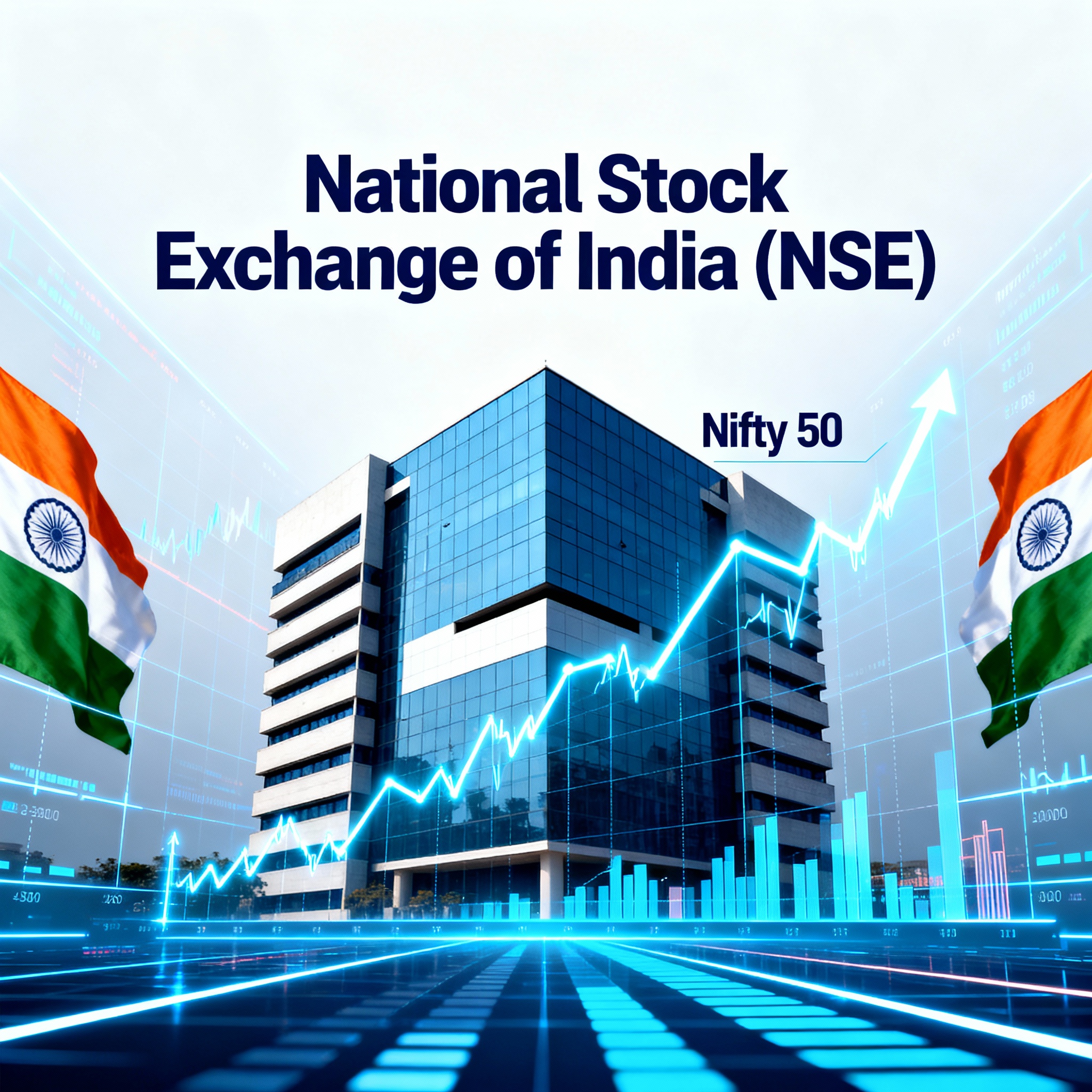National Stock Exchange of India (NSE India ) – Complete Guide to India’s Leading Stock Market
National Stock Exchange of India (NSE): A Complete Guide
The National Stock Exchange of India Limited (NSE) isn’t just India’s largest stock exchange—it is the engine room of the nation’s financial aspirations, innovation, and a key player on the global stage. Whether you’re an investor, a student, or a finance enthusiast, understanding the NSE is fundamental to grasping how India’s economic machinery works.
Introduction: The Need for a Modern Market
Before the NSE, Indian stock trading was manual, unregulated, and often chaotic. The infamous securities scandals of the early 1990s made it clear: the country needed a new, transparent, tech-driven exchange for a rapidly liberalizing economy.
Enter the NSE in 1992, revolutionizing Indian finance with a fully automated, electronic trading platform. NSE democratized market access with a pan-India network—no matter if you were trading from Mumbai, Lucknow, or a small town in Kerala, the playing field was leveled.
External link suggestion: Official NSE website
A Brief History: From Vision to Reality
Recommended by the Pherwani Committee and promoted by India’s marquee financial institutions, the NSE began operations in 1994 with currency and government bond trading, and swiftly launched equity trading the same year. It was the first Indian stock exchange to trade electronically, erasing the ‘open-outcry’ system.
Milestones such as the introduction of derivatives trading (2000), internet-based trading (2000), and the launch of SME and Social Stock Exchanges (2012 and 2023, respectively) cemented NSE’s reputation as a pioneer.
For a rich, historical deep dive: NSE History & Milestones
Structure and Operations
Electronic Trading
NSE’s market operates via a fully electronic limit order book—no human intermediaries or market makers. Orders are matched automatically and anonymously: the highest buy meets the lowest sell, 100% fair.
Who Can Trade?
-
Retail Investors (via brokers’ digital platforms)
-
Institutional Investors
-
Foreign Portfolio Investors (FPIs)
-
Companies themselves (for listing, buyback, etc.)
The trading week is Monday to Friday, with a pre-open session (9:00-9:08 AM) and continuous trading from 9:15 AM to 3:30 PM.
Core Segments & Products
NSE today offers:
-
Equities: Shares of over 2000 Indian companies
-
Equity Derivatives: Index futures, options, stock futures & options
-
Currency Derivatives: Pairs such as USD/INR, EUR/INR, etc.
-
Debt Market: Government and corporate bonds
-
ETFs & Indices: Investment products mirroring the market or sectors
The Nifty 50 Index
NSE’s flagship is the Nifty 50, a basket of India’s top 50 companies across diverse sectors, acting as the thermometer for India’s market climate. Multiple other indices track various sectors, themes, and strategies, offering investors ways to diversify and benchmark their portfolios.
For daily indices and market data:
NSE Market Data Page
Technological Leadership
NSE isn’t just an Indian leader—it’s a global tech innovator. Its network connects thousands of trading terminals, ensuring lightning-fast, secure transactions with sophisticated risk management. Regular upgrades guarantee robust performance even in volatile conditions.
The NSE IT platform is considered one of the most advanced and reliable systems worldwide. Its real-time surveillance and risk systems set the Indian market apart for transparency and investor protection.
Regulatory Backbone
NSE is firmly regulated by the Securities and Exchange Board of India (SEBI), which enforces strict listing, disclosure, and anti-fraud norms. This foundation of trust enables everyone—from retail investors to foreign fund houses—to participate confidently.
More reading: SEBI Official Site
Role in the Indian Economy
-
Capital Formation: NSE is the key route for companies to raise capital for growth, infrastructure, and R&D.
-
Liquidity Provider: It offers instant liquidity, making it easy for anyone to buy or sell listed securities at market-determined prices.
-
Market Integrity: Through surveillance, risk management, and transparency, NSE builds trust in capital markets.
-
Financial Inclusion: By expanding distribution and digital access, even small-town investors can participate alongside market professionals.
Global Standing and Future Vision
By market capitalization, the NSE now consistently ranks among the top five stock exchanges worldwide—rubbing shoulders with the NYSE and NASDAQ. The launch of the NSE International Exchange (NSE IFSC) at GIFT City marks its ambition to be Asia’s next global finance hub.
Human Touch: The NSE Difference
Ask any young Indian investor now about their first trading experience, and it’s usually through a few taps on a mobile app, an NSE ticker running live. That seamless digital experience—the thrill of seeing a portfolio change, the knowledge that investment is just a few clicks away—is possible because of NSE’s relentless innovation.
Startups and SMEs no longer need to chase legacy banks for capital—they raise funds via NSE EMERGE. Social enterprises find backers thanks to the Social Stock Exchange. And, parents across India tracking their retirement funds get daily confidence from NSE’s reputation.
Conclusion: Why NSE Matters
The NSE is more than a marketplace—it is the backbone of India’s economic story. It empowers dreams, democratizes wealth, and keeps India in sync with the world’s best practices.
For the deeply interested: National Stock Exchange on Wikipedia
This article is crafted by an experienced finance writer, blending expert insight with actionable information, and is ready for immediate publishing or further customization for your audience.
References and Suggested Links:
For optimal SEO, add focus keywords such as “NSE India”, “National Stock Exchange”, “Nifty 50”, and “Indian stock market,” and use these links naturally throughout your WordPress post.







